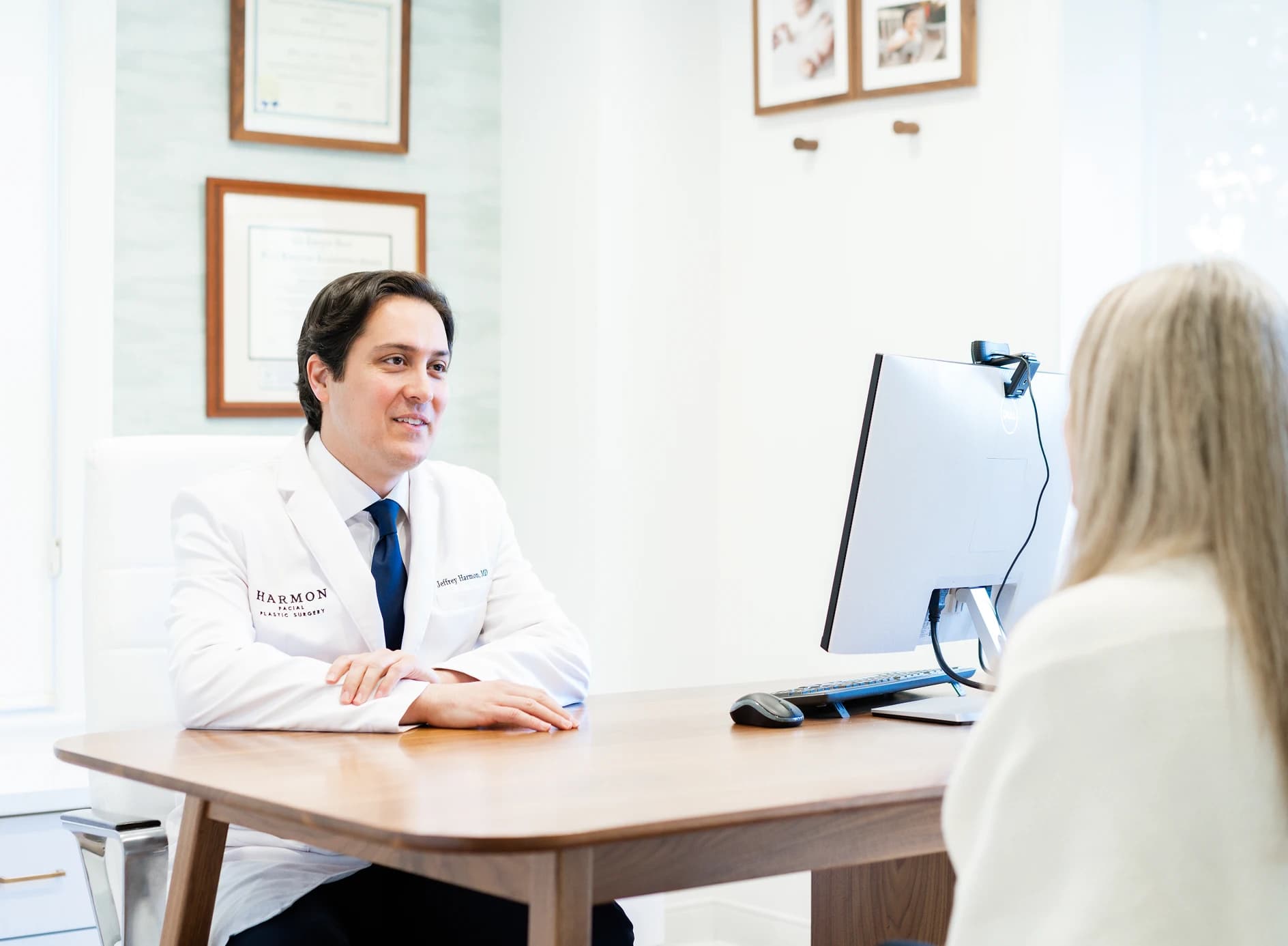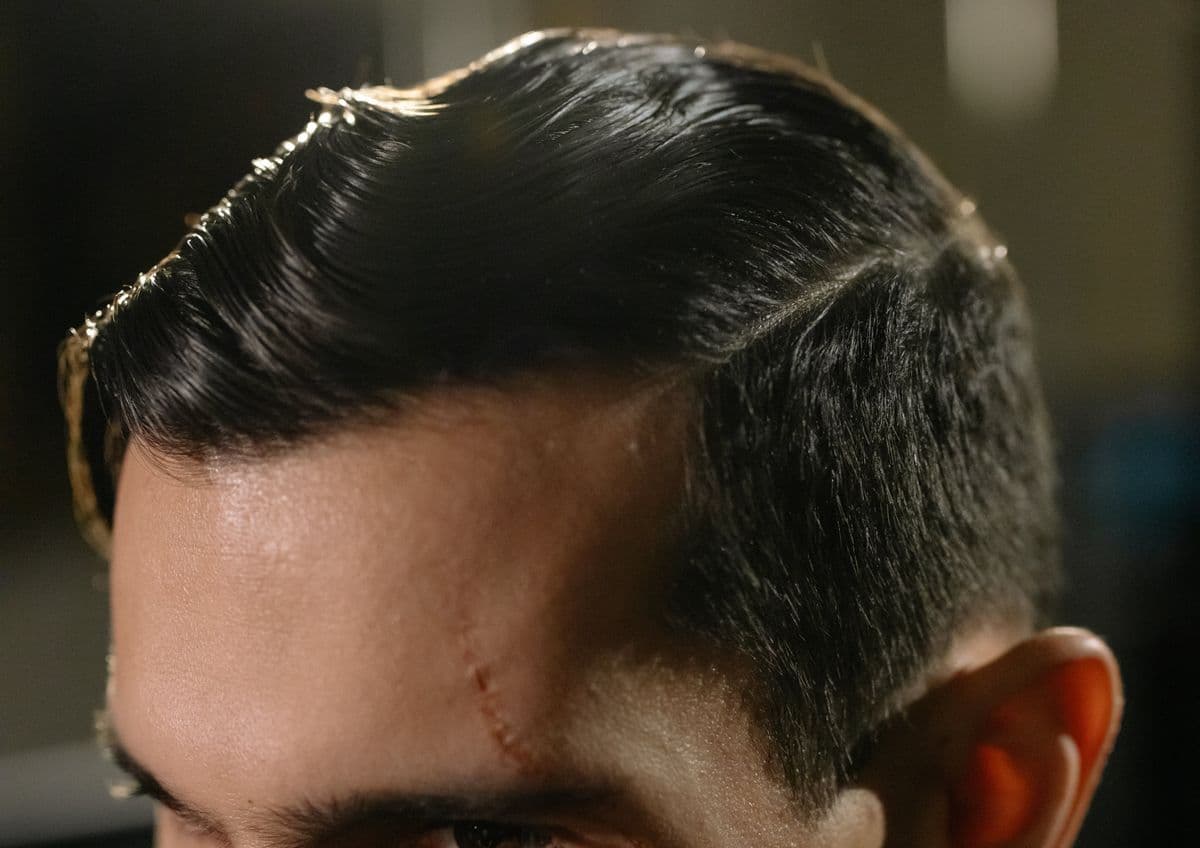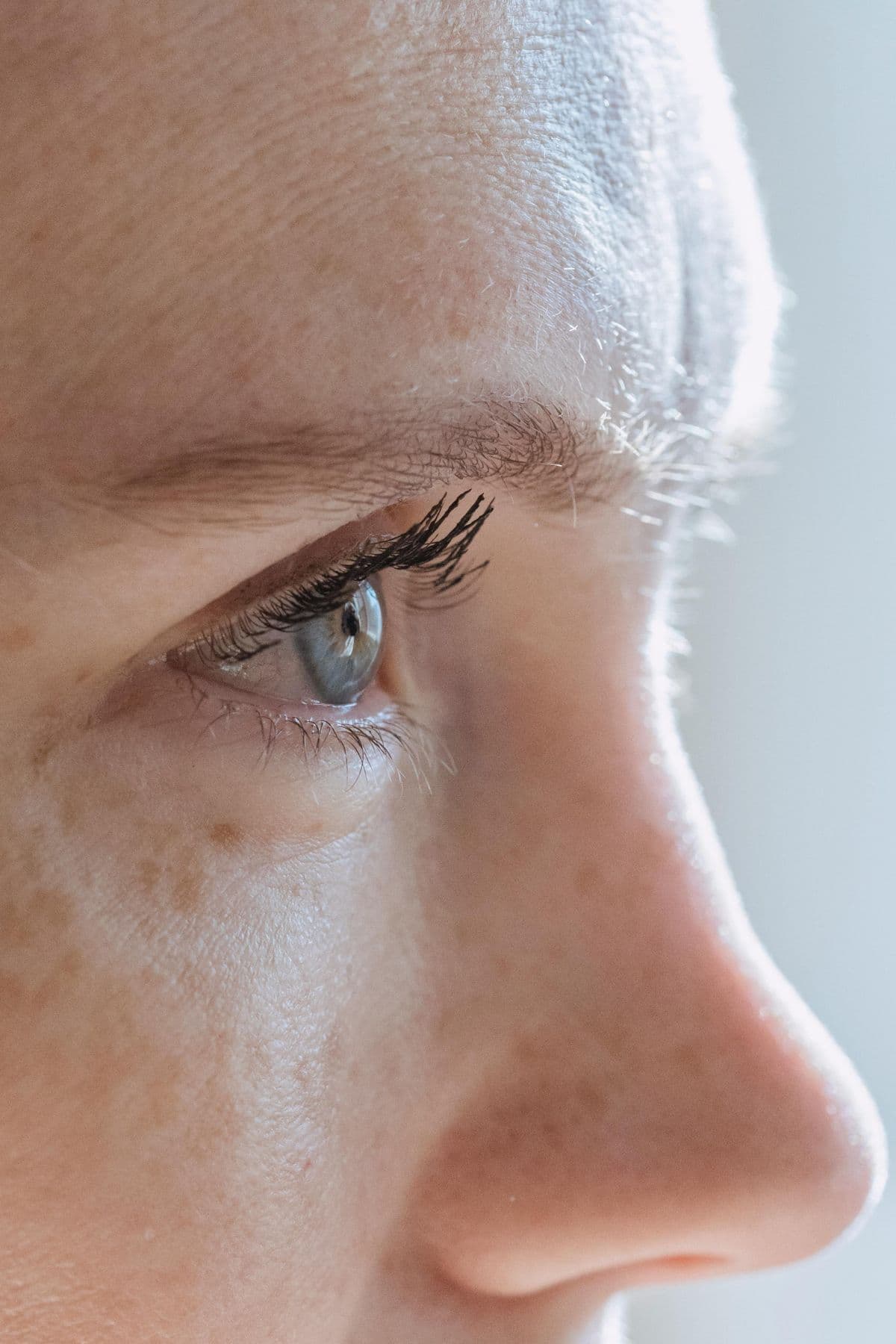Scar Revision
- Can be performed under local anesthesia
- Can improve certain functional problems associated with scars around the eyes and mouth
Contact Us
What is Scar Revision?
Scar revision is a surgical procedure in which some or all of an abnormally thick and wide scar is removed and closed. One purpose of scar revision is to create a new incision that forms a less visible scar. A scar revision procedure may also be for the purpose of reducing the size of an abnormal scar. Finally, a scar revision may be for the purpose of reorienting a scar to make it less visible and/or to improve a functional deficit created by the scar. The scar is generally removed to its edge and depth. Dissolvable sutures are then placed in the deep tissue to reduce tension on the closure site. Non-dissolvable sutures are then used to approximate the skin. These sutures are removed a few days after surgery. Like all surgical incisions, a regimen of ointments applied to the surgical sites for months after surgery. This regimen is intended to improve healing and minimize the appearance of the new scar.
What Conditions Does the Procedure Address?
Scar revision helps address the appearance of hypertrophic scars (thick and wide scars) that can form after surgery on or injury to the face. The conditions scar revision can help address include:
Why Choose Dr. Harmon
The desire for youthfulness is understandable. There is no area more important than the face. After all, the face cannot be hidden. It is how we present ourselves to the world. Dr. Harmon works with a refined eye and trained hands to develop a personalized treatment plan with you, utilizing advanced techniques in surgical and non-surgical care of the face, nose, eyes, neck and hair.
Fellowship trained facial plastic surgeons have a unique specialized skill set in performing surgical and non-surgical procedures on the face, nose, eyes, neck and hair. The pathway to becoming a facial plastic surgeon begins with five years of rigorous training in head and neck surgery. This training is focused on all aspects of surgery for the head and neck, in addition to aesthetic and reconstructive procedures.
A small pool of top performing graduates from head and neck surgery programs are then selected to complete sub-specialty training as a fellow in facial plastic and reconstructive surgery through the American Academy of Facial Plastic and Reconstructive Surgery (AAFPRS).
Dr. Harmon completed his fellowship in facial plastic surgery through the AAFPRS with the world-renowned facial plastic surgeon Dr. Andrew Jacono on Park Avenue in New York City. Dr. Jacono is world renowned for developing the extended deep plane facelift technique. Dr. Harmon is one of the few surgeons in the world, and the only surgeon in the Cincinnati area, fellowship trained in this technique by Dr. Jacono.
Quad A Accredited Surgery Suite
Harmon Facial Plastic Surgery is proud to have a Quad A accredited operating room and facility in our office. Our single-physician, single-specialty facility meets or exceeds the strict guidelines and high standards set forth by Quad A, demonstrating our strong commitment to patient safety and excellence in surgical care. We utilize the services of board-certified anesthesiology physicians only as well as our own personal clinical support staff to ensure the most comfortable, safest experience for our clients.
Overview of the Procedure
The team at Harmon Facial Plastic Surgery works tirelessly to prepare patients well for their procedure. The time spent with patients and resources provided facilitates a smooth transition from the procedure through recovery. The following overview is a broad summary of the information provided to patients:
Procedure Consultation
Expect a detailed, informative discussion with Dr. Harmon about your concerns and aesthetic goals. He will develop a personalized treatment plan to address these concerns and goals.
Pre-Treatment Preparation
Patients receive a packet with detailed pre-operative instructions prior to surgery. This packet includes information on what supplements and medications to hold prior to surgery, activity restrictions, and what supplies are necessary for post-operative recovery. Prescriptions are sent prior to surgery with instructions on their use. Finally, if medical clearance is required, a form detailing the necessary clearance and testing is provided to present to their primary care provider.
Day of Treatment
Patients are instructed to arrive at the office in comfortable clothes. The surgical plan is discussed with the patient in detail. Paperwork is completed. Photos are usually taken pre-operatively. Finally, the patient meets the surgical team, which may include nurses, anesthesiologists, and/or scrub technologists, depending on the procedure(s) and type of anesthesia used.
Follow-Up Appointment
Sutures are usually removed approximately seven (7) days after surgery. Subsequent follow up appointments depend on how the patient is healing.
Social Readiness
The time when patients feel ready to socialize depends on patient-specific factors as well as the size and extent of the scar revision procedure. Most patients feel ready to socialize approximately seven (7) to ten (10) days after surgery. Makeup can generally be applied to incisions starting approximately fourteen (14) days after surgery.
Ideal Candidates for Scar Revision Surgery
Ideal candidates for scar revision include those patients who demonstrate:
- Thick, wide scars on the face that cause aesthetic concerns
- Scars on the face that cause webbing, which can adversely affect movement of the eyes and mouth
Candidates for scar revision surgery have usually developed their scars from a previous surgery or trauma. Most candidates for scar revision surgery range in age from their twenties (20s) to seventies (70s). A consultation is essential to determine candidacy for the procedure, because there may be factors that preclude this procedure for certain individuals. Reasonable expectations must be established about what scar revision surgery can and cannot accomplish. As with all facial plastic surgery procedures, results can vary.
What to Expect from Recovery
Recovery from scar revision surgery is specific to the individual. The initial recovery time for scar revision surgery is seven (7) to ten (10) days for most individuals. Some swelling and bruises are expected after scar revision surgery. Post-operative bruises are generally minimal. Sutures are typically removed approximately seven (7) days after surgery. Post-operative swelling and bruises generally improve significantly by seven (7) to fourteen (14) days after surgery. The healing process does not end after fourteen (14) days, however. For example, swelling and bruises are expected to continue to improve and resolve in the ensuing days and weeks. The incisions continue to heal for months after surgery.
Sutures are removed
Initial recovery
Post-operative swelling and bruises
Benefits of Scar Revision Surgery
The potential benefits of scar revision surgery include:
- A scar that is smaller and, therefore, less visible than the previous scar
- A scar that is reoriented to make it less visible than the previous scar
- Reduced webbing and, therefore, less restrictive movement of the eyelids and mouth
Risks of Scar Revision Surgery
The potential risks of scar revision include, but are not limited to:
- Bruising
- Swelling
- Infection
- Bleeding
- Poor Healing
- Persistent abnormal scaring
Combine Scar Revision Surgery with Other Facial Enhancements
Scar revision surgery complements other surgical and non-surgical procedures well. Procedures that complement scar revision include, but are not limited to:
Deep Plane Facelift
When combined with scar revision, a deep plane facelift can improve skin laxity and facial contour, helping blend the treated area into smoother, more youthful features.
Neck Lift
A neck lift can refine the jawline and remove sagging skin, which can further enhance the results of scar revision in the lower face or neck by creating a cohesive and refreshed appearance.
Brow Lift
Pairing a brow lift with scar revision near the forehead or upper face can brighten the overall expression, helping balance and elevate the visual impact of the revision.
Blepharoplasty
Blepharoplasty may complement scar revision around the eyes or midface, contributing to a more youthful, rested appearance while enhancing symmetry and skin texture.
Rhinoplasty
When scar revision involves the nose or surrounding areas, rhinoplasty can help refine nasal shape and proportion for natural harmony and smooth facial transitions.
Fillers
Soft tissue fillers can improve contour irregularities and help restore volume around revised scars, blending the area seamlessly into the surrounding skin.
Botox©
Botox© can reduce tension in the muscles around scars, and may soften lines and improve the appearance of dynamic wrinkles that may accentuate the treated area.

Book Your Consultation
Take the first step toward your aesthetic goals with a personalized consultation. Dr. Harmon will listen to your concerns, answer your questions, and guide you through your options. Schedule your consultation today and discover how expert care can make a difference.
Read More About Scar Revision

Scar Treatment: An Explainer
Scar treatment can address specific concerns about the appearance of a scar on your face and/or neck. There are four general categories of treatments...
Is Silicone Gel Effective in Improving the Appearance of Surgical Incisions?
You are likely aware of silicone-based scar gels by seeing ScarAway© or another over-the-counter brand in your local pharmacy. Surgeons in all...

Can Botox© and Similar Products Improve the Appearance of Scars?
The treatment of scars is complex and often requires multiple modalities of treatment, including lasers, chemical peels, topical medications,...
FAQ
What type of anesthesia is required?
Scar revision can usually be performed under local anesthesia or under IV sedation. Some individuals may require general anesthesia.
Is scar revision a painful procedure?
Facial plastic surgery procedures are generally well-tolerated by patients and typically involve little pain, especially when compared with surgery on other areas of the body. Patients are usually prescribed just a small amount of pain medication for after surgery. In fact, we have found most use only over-the-counter pain medication including acetaminophen and/or ibuprofen after surgery instead. And those who do use the prescribed pain medication usually only use it the first night after surgery. With that in mind, it is important to note that every patient perceives and processes pain differently. Some patients have a high pain tolerance. Others may be more predisposed to be more sensitive to pain. We at Harmon Facial Plastic Surgery are focused on balancing minimizing post-operative discomfort and maximizing safety.
Will scar revision eliminate my scar?
No. Every incision on the body heals differently than normal skin. As a result, every incision, including scar revision surgery, results in a scar. Scar revision surgery can improve the appearance of a scar in multiple ways. First, it can create a thinner, less visible scar. Second, it can reorient a scar in a way that makes others less likely to recognize it. Third, it can place a scar in a natural fold and/or border that masks the appearance of a scar. Every scar revision surgery requires a different approach and requires the expertise of a plastic surgeon focused exclusively on the face.
Written by Dr. Harmon
Discover the expertise and compassionate care of Dr. Jeff Harmon, a fellowship-trained facial plastic surgeon deeply rooted in the Cincinnati community. A former collegiate athlete and Cornell University graduate, Dr. Harmon brings discipline, precision, and a global perspective to his surgical practice—refined through elite fellowship training in New York City.
Located in Hyde Park, Harmon Facial Plastic Surgery proudly serves patients throughout the Cincinnati area offering personalized facial aesthetics with world-class skill and a hometown heart.